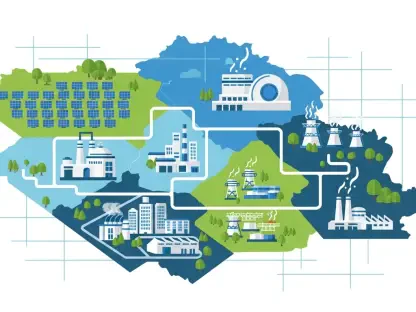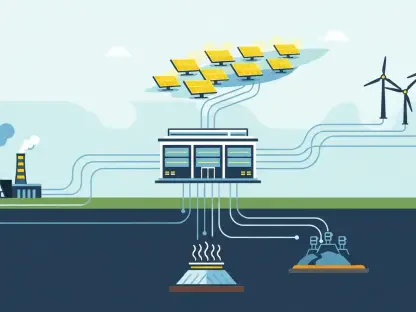Christopher Hailstone is a renowned expert in energy management, renewable energy, and electricity delivery. As our Utilities expert, he offers unparalleled insights into grid reliability and security. Recently, he shares his expertise on Portugal’s substantial $466 million investment aimed at improving grid management and battery storage after a significant blackout affected both Spain and Portugal. This initiative seeks to address the increasing complexity of managing renewable energy sources like wind and solar to enhance the resilience of the electricity grid.
Can you explain the main reasons behind the recent massive blackout across Spain and Portugal in April?
The blackout was primarily triggered by a surge in voltage that caused a cascade of power plant disconnections. It started with a miscalculation by Spain’s grid operator, which failed to balance the correct mix of energy in the system. This miscalculation, combined with the inability of some thermal power plants to help maintain appropriate voltage levels, led to the outage spreading into Portugal, especially as it was importing electricity at the time.
Could you elaborate on how the Portuguese government plans to use the $466 million investment to improve grid management?
The Portuguese government is focusing on enhancing the operational and control capacity of the electricity grid to manage the variability of renewable energy sources. A significant portion of the investment will go towards introducing technology that can handle intermittent power supplies from wind and solar, such as advanced voltage regulation and grid stability equipment. This is crucial for transitioning to a more decentralized and renewable-focused energy model.
What specific steps will be taken to boost battery storage in Portugal?
One of the pivotal steps includes increasing battery storage capacity from the current 13 megawatts to a targeted 750 megawatts. This expansion will allow for better energy storage during periods of high renewable generation, reducing dependency on real-time adjustments and improving the reliability of electricity delivery to critical infrastructure.
How much of the investment will be directed towards improving the operational and control capacity of the electricity grid?
Out of the total investment, approximately 137 million euros will be specifically allocated to enhance the grid’s operational and control capacities. This investment is aimed at making the grid more adept at handling intermittent outputs from renewable energy sources and ensuring a steady and reliable supply of electricity.
What is the role of intermittent renewable energy sources like wind and solar in the recent blackout?
Intermittent renewable sources, such as wind and solar, inherently have fluctuating outputs due to their dependence on weather conditions. In the recent blackout, the reliance on these renewable sources without adequate balancing measures led to instability, as the grid struggled to manage the resulting fluctuations in supply and demand.
How do these renewable sources complicate grid management compared to traditional thermal power plants?
Unlike traditional thermal power plants, which provide a stable and predictable supply of energy, renewable sources like wind and solar vary depending on environmental conditions. This variability makes it challenging to maintain a continuous balance between electricity production and consumption, necessitating advanced management techniques and flexible storage solutions to stabilize the grid.
Could you provide more details about the shunt device that will be installed by the Portuguese grid operator REN?
The shunt device is designed to measure electrical current accurately and prevent overloads by regulating voltage levels. It will play a critical role in maintaining power system stability by continuously balancing the grid, thus preventing situations that could lead to outages.
How will the shunt device and other equipment help in regulating voltage and improving power system stability?
These devices will better manage the variations in electricity flow, caused by the intermittent nature of renewable energy. By accurately measuring and controlling voltage levels, they help prevent power surges and ensure a consistent and reliable energy supply, thus mitigating the risk of blackouts.
In what ways will the planned storage increase prevent a shutdown of the country?
By significantly expanding battery storage capacity, Portugal can store surplus energy generated during periods of high renewable output and release it when demand is high or generation is low. This buffer is crucial for maintaining energy security and preventing shutdowns, particularly for essential services and infrastructure.
What key infrastructure services will benefit from this increased energy autonomy?
Critical infrastructure, including hospitals, fire departments, security forces, and other public administration services, will benefit immensely. The increased storage capacity ensures these services have a reliable power supply, even during grid disturbances, thereby enhancing overall national resilience.
How does Portugal’s current 13 megawatts of battery storage capacity compare to the new goal of 750 megawatts?
Currently, Portugal’s battery storage capacity is relatively modest at 13 megawatts. Achieving the target of 750 megawatts represents a significant upgrade, roughly 57 times the existing capacity, underscoring a strong commitment to bolstering grid reliability and energy independence.
Is there a specific timeline set for achieving the 750 megawatts of battery storage capacity?
While the target is ambitious, there hasn’t been a specific timeline set for reaching 750 megawatts. The urgency of the recent blackout has accelerated plans, but the exact timeframe will depend on various factors, including technological, financial, and regulatory considerations.
Can you discuss the significance of the planned decree to speed up the implementation of these investments?
The planned decree signifies a governmental commitment to fast-tracking these essential investments. By removing bureaucratic barriers and streamlining processes, the decree aims to swiftly address vulnerabilities in the energy system and enhance grid resilience in the face of growing renewable energy adoption.
How is Portugal’s situation similar to or different from the measures being taken by Spain’s grid operator, Redeia?
Portugal and Spain both share the challenge of integrating high renewable energy outputs into their grids. However, the measures differ; Portugal is focusing more on expanding storage capacity and modernizing grid management, while Spain’s response involves refining energy mix calculations and enhancing grid operation protocols to prevent miscalculations that led to the blackout.
Could you expand on the implications of the current electricity consumption in Portugal, which stood at 115 GWh on June 20, for grid management strategies?
With electricity consumption at 115 GWh, efficient grid management is crucial to ensure supply meets demand without interruptions. The demand underscores the need for precise energy forecasting, robust infrastructure, and intelligent balancing systems to cater to daily peaks and troughs effectively, particularly as renewable energy’s share continues to grow.
Do you have any advice for our readers?
As individuals, we play a part in the energy ecosystem. Staying informed about energy consumption habits and supporting renewable initiatives can collectively contribute to a more resilient energy grid. Advocacy for sustainable energy practices and awareness of infrastructure developments can drive progress in energy management and grid reliability.









